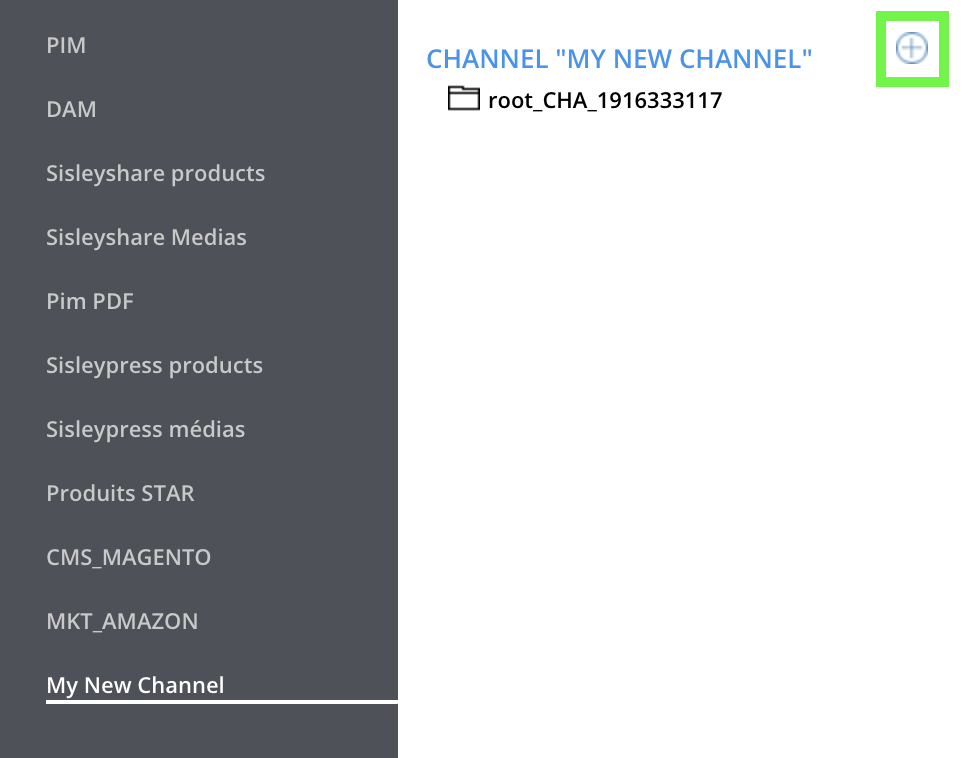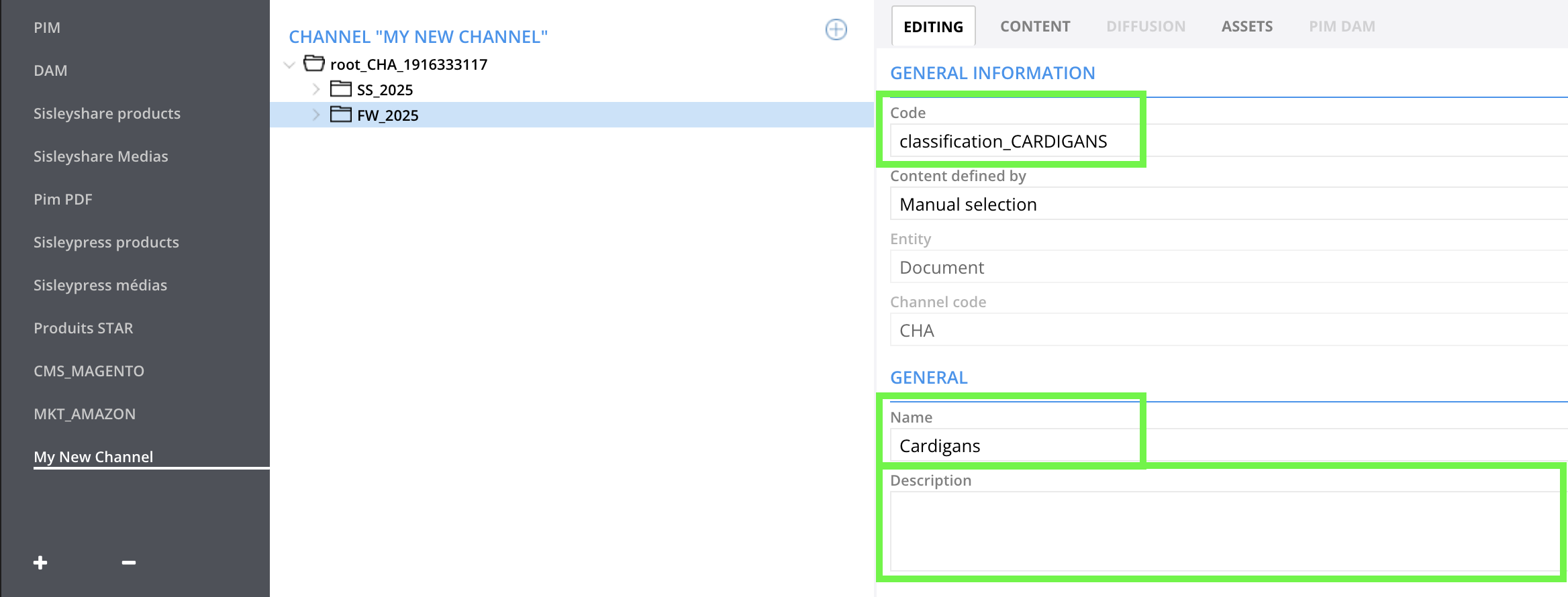Managing Classifications in a Channel
Learning Objectives
- Understand how to structure the classification to optimize navigation and data dissemination
- Create, organize, and customize a classification hierarchy within a distribution channel
- Manage nodes: add, modify, move
Now that you know how to create distribution channels suited for different purposes, let's look at how to design a classification hierarchy within a channel.
Just like the architecture of the PIM or DAM, the classification hierarchy of a channel groups product sheets, assets, and their associated data.
Before you begin, ask yourself the following questions:
- What data do you want to distribute?
- How should this data be organized?
Good to know
- Segmenting data in classifications helps to simplify navigation.
- A classification can contain up to 10,000 elements to distribute.
1. Classification Architecture
Each channel has its own custom classification hierarchy.
When a new channel is created, it automatically includes a root node called "Root", which serves as the starting point for the entire classification hierarchy of the channel.
A classification node can contain:
- Either classification sub-nodes,
- Or data from the PIM, such as product sheets and/or assets.

Good to knowYou can customize the classification hierarchy of a channel independently from that of the PIM or DAM in your Quable instance.
2. Add a New Classification Node
- Select the root node
- Click on + at the top right
Fill in the parameters:
- code
- name
- defined by: manual or dynamic

Good to knowYou can add as many classification nodes and sub-nodes as you wish.
3. Navigate Through the Classification
An arrow in front of a classification node indicates that it contains sub-nodes.
To explore the hierarchy, click the arrows to open a node and display its sub-nodes.
Nodes at the lowest level of the hierarchy do not show arrows. These are the nodes that allow data to be distributed, such as product sheets and/or assets.

4. Rearrange the Classification
Using drag-and-drop, you can:
- Change the order of classification nodes.
- Move a classification node inside or outside another one.

Once the reorganization is complete, a confirmation message will appear to validate your changes.

Good to knowMoving a classification node will automatically move all its sub-nodes.
5. Customize Classification Nodes
Each classification node can be customized:
- Select the classification node.
- Modify its code.
- Modify its name.
- Modify the attributes associated with the classification (optional).

You can also associate a picture from your assets to illustrate the classification node:
- Go to the Assets tab.
- If the picture is already in the DAM, enter its name or code in the search bar.
- If the picture is not yet in the DAM, click on the Upload a new asset button and upload it from your local machine.

In summary
- Architecture
- Each channel includes a root ("Root") containing all the classification nodes,
- Each classification node can contain sub-nodes or data,
- Each node, added via a dedicated button, is customizable (code, name, type),
- Nodes can be moved and rearranged by drag-and-drop. Sub-nodes follow automatically,
- The last levels are used to distribute data.
- Customization
- Nodes can be modified (code, name, attributes),
- Nodes can be illustrated with assets from the DAM.
- Best Practices
- Segment content to improve navigation,
- Technical limit: a classification can contain up to 10,000 elements.
Next Chapter
Now that you know how to manage classifications in a channel, let's explore how to Create Saved Search Lists.
Updated 3 months ago
